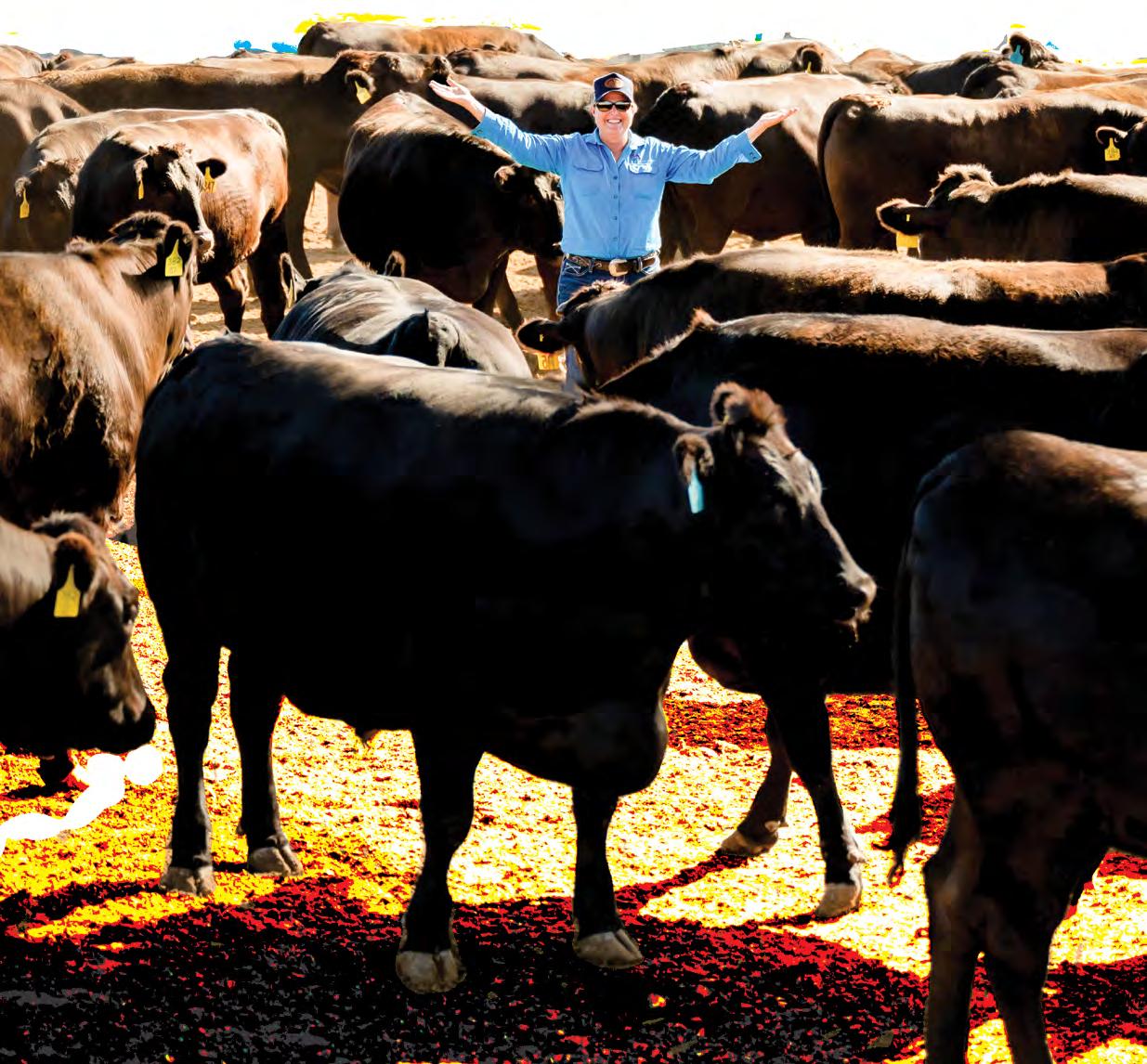WAGYU
QUARTERLY UPDATE
Sire breeding trends - 1994 to 2022
WagyuEdge23 Conference & Tour
How EBVs change as more data is added
International Wagyu tour - USA


Sire breeding trends - 1994 to 2022
WagyuEdge23 Conference & Tour
How EBVs change as more data is added
International Wagyu tour - USA


Elders Wagyu has a powerful network of over 200 branches across Australia, with Wagyu connections from global corporate producers to the very best elite breeders.

Our network is headed up by James Matts who has a substantial history in stud stock, genetics and intensive agriculture spanning over 25 years in Australia. His dedication and passion for Wagyu is second to none, having successfully negotiated record sales results at auction and in the paddock.

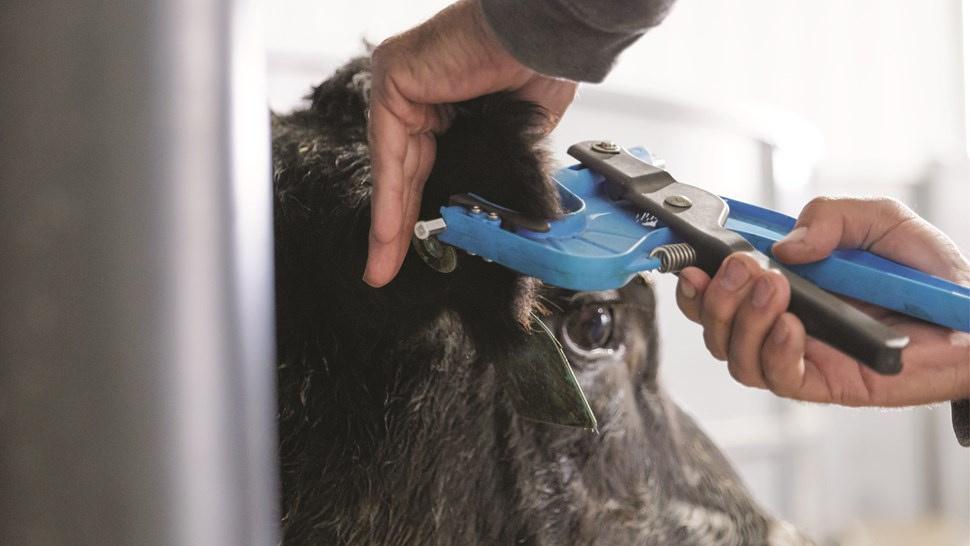


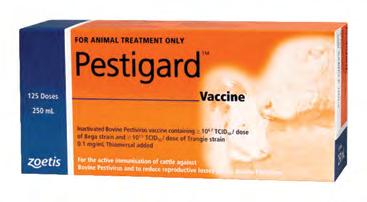


Searching for a sire in top 5% for GL, all growth and carcass weight traits and top 5% marbling seems simple. United is the ONLY sire that makes the list!
United does it easily with top 1% for GL, all growth traits, CWT; and Marbling score top 3%
United is also top 1% in Marbling Fineness and is the no 1 sire for the $ Indexes WBI, SRI and FTI!!
United is the no 1 ranked sire of all breeds in the ABS Australia Beef Sires for the current year
The best Wagyu sire for his combination of EMA, Marbling and Marbling Fineness

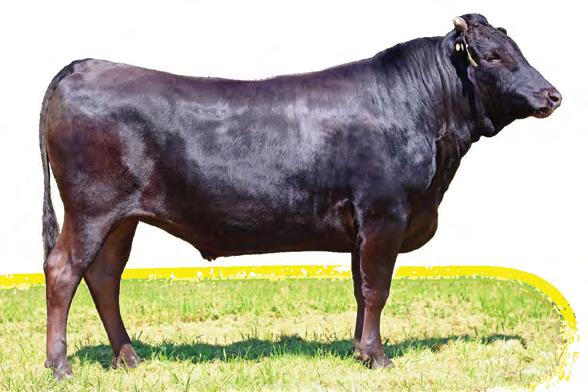

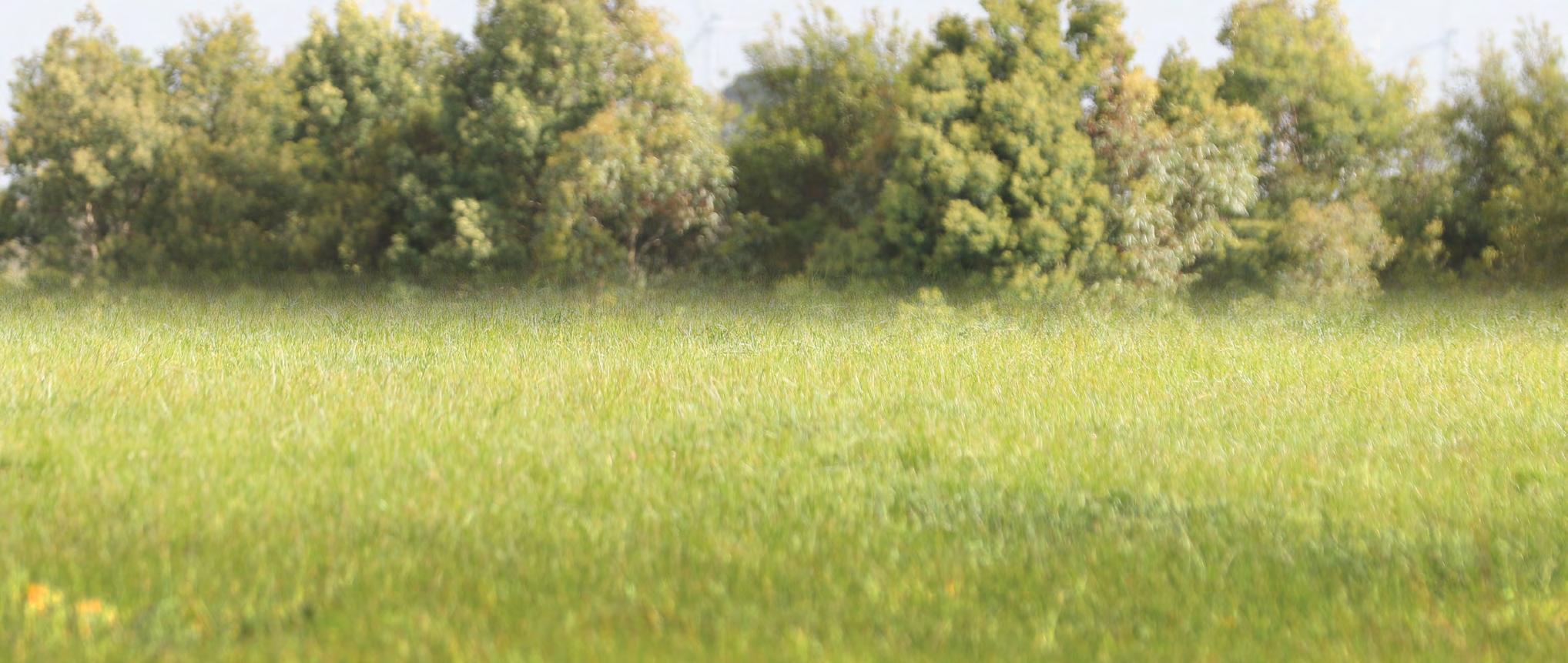
Ranks top 1% in EMA, Marble Score, Marble Fineness, $FTI and $F1
Licensed to marble with the potential to deliver the best carcass results in the breed
A big thank you to our breed's pioneers and early adopters laying the foundations for such sustained and dramatic growth.
As we go to print with this edition of the magazine, we are getting ready to catch up with many of you in Sydney at our WagyuEdge'23 Conference and Tour. I sincerely believe our annual conference is one of the top global red meat industry events and based on the schedule of speakers and functions, I expect this year will deliver another informative and enjoyable experience for delegates.
Every organisation has those milestones that, when reached, forces you to reflect on the journey to date. Last month we welcomed our 1001st full member! To all our breed's pioneers and early adopters, I extend our thanks for laying the foundations for such sustained and dramatic growth. Membership of this size is a significant endorsement of the work this company is delivering, and to all the staff who makes this possible, I thank you.
The Wagyu Feeder Check tool results from a two-year project with CSIRO and Neogen to deliver a commercialised DNA genomic test for Wagyu cattle to help identify low genetic merit/unprofitable Wagyu F1 and Wagyu content animals early on and eliminate these from long-fed programs.
Throughout the final stages of testing, this tool has delivered some outstanding results in its power to discriminate between groups of animals for marbling, carcase weight, fat depth and eye muscle area. We are excited to launch the Wagyu Feeder Check at the WagyuEdge'23.
I sincerely believe this tool will significantly contribute to supporting our industry's profitability and sustainability.
The WagyuEdge'23 Conference and Tour are upon us, with our best-ever program organised by the AWA Team. Over the three-day program, we will hear from Australian and international thought leaders and experts across several topics, along with leading Wagyu breeders and supply chains on their operations, successes and learnings from years of producing a luxury product.
The post-conference regional NSW tour will see us visit three Wagyu operations: Kuro Kin Wagyu, a leading producer of Fullblood Wagyu and F1 Wagyu, Bald Ridge Wagyu, specialising in fullblood black and red Wagyu and Gooree Park Mudgee, a producer of Wagyu, thoroughbreds and wine.

Calving for Cohort one of the AWA-PTP has now finished. A significant milestone will see data starting to come into the system, some of which is reported in this issue. We are also well underway in our Cohort 2 AI program, with 70 sires used across 2,000 Fullblood breeders to date.
At our February 2023 Board meeting, the Board approved implementing an F1 AWA-PTP progeny strategy to amplify the outcomes of the AWA-PTP for sire contributors significantly.
Starting in 2023/24, we will be able to include large numbers of F1 progeny through AI programs alongside Fullblood progeny. This will lift EBV accuracy to above 90% for carcase and growth traits and deliver outstanding value to our future AWA-PTP sire contributors.
For our smaller members who struggle to form contemporary groups and generate data to underpin EBVs for their sires, I ask that you consider nominating a sire for the AWA-PTP to prove your genetics and link your herd more strongly to the AWA's global genetic database.
As the AWA continues to grow to support the thriving global Wagyu Sector, seeing our company mature and consolidate is pleasing. We continue to welcome many new members from Australia and overseas as our membership numbers climb to more than 1,000.
A core strategy of our growth has been to engage all breeders worldwide to help promote breed development, expand our gene pool, identify leading genetic diversity and prove those genetics for the commercial performance traits we rely on day in and day-out. I look forward to meeting many of you in Sydney for our WagyuEdge'23 event.
Charlie Perry AWA PresidentEditorial Emily Rabone − emily@wagyu.org.au
Contributors
Charlie Perry, Dr Matt McDonagh, Eleanor McNaught, Jon Condon and Eric Barker.
Design/Advertising
Heather Frazier − heather@squishcreative.com
Print Lighthouse Print Group (Printed using soy vegetablebased inks with alcohol free solutions. The magazine is fully recyclable and printed in Australia).


Publisher/Distributor
Australian Wagyu Association communications@wagyu.org.au


Disclaimer
All content subject to copyright and may not be reproduced in any form without the written permission. Opinions expressed in The Wagyu Quarterly Update are not necessarily those of the Association. Acceptance of an advertisement does not imply endorsement of any product or service by the magazine or the association, nor support any claims by the advertisers. Every effort is made to ensure information contained in this magazine is correct at the time of publishing.





I look forward to greeting many of you shortly at the 2023 conference in Sydney Australia. The Wagyu Sector has been growing rapidly, with a net full membership increase of 143 new members since our last conference in April 2022.

I hope that many of existing members who share their time and experience at our annual WagyuEdge conferences attend again this year to help welcome and network with our growing membership.
The AWA Board has met for review of the AWA half yearly (July to December 2022) performance against the 2022-2023 operational plan, assess statutory items and consider key items as follows:
1. New Crossbred Wagyu Feeder Check genomic prediction tool approved for commercial release in April 2023 in line with the WagyuEdge'23 Conference. The AWA Board reviewed the latest analysis of data completed by CSIRO along with approving final license agreements for commercial release of the Wagyu Feeder Check tool.

2. New F1 progeny component of AWA-PTP approved to commence in 2023/2024. The AWA-PTP will use semen straws from program nominated sires across Angus females to form large F1 contemporary groups with an additional 30 slaughter progeny per sire. AWA-PTP semen sire nominators will benefit from considerable further increase in EBV accuracies, with carcase trait accuracies increasing from 75% (12 Fullblood slaughter progeny) to more than 90% (12 Fullblood + 30 F1 slaughter progeny). We aim to process an additional 1,100 F1 AWA-PTP slaughter progeny per year to generated significant added value to AWA-PTP sire contributors.
3. Australian Wagyu Association USA breeder tour approved. The AWA will take up to 40 members through key Wagyu breeding ranches and facilities across Canada and the USA in a 2 week tour accessing many of the largest and well known Wagyu operations in North America. The Tour will be timed to finish in San Antonio Texas so that participants can attend the American Wagyu Association Conference 21 – 23 September 2022.

4. A new Bylaw to stop members using other herd prefixes in their animal names was approved. This change was implemented following an increase in members using the prefix of another member in the animal name of their registered animal. The change will reduce confusion concerning presumed breeding of animals based on registered animal names.
5. Company operational performance against KPIs to the end of second quarter FY2023 was reviewed, with progress to date satisfactory against all key work areas. Financial performance was reviewed, noting satisfactory operation against budget year to date with the AWA in a continued sound position.
6. 76 new AWA Member applications were approved for the second quarter, taking total AWA membership to 1001 full members and 126 associate members.
AWA-Progeny Test program (PTP) update

2021-2031 AWA-PTP COHORT 2
Breeding program almost complete
Over the last 12 months, the AWA team have been working with seven different participant herds and have used semen from 70 nominated sires across two breeding years. Final pregnancy rates from Cohort 1 single cycle AI programs were 61% averaged across all herds.
A total of 974 calves have been registered with the AWA so far from Cohort 1, with all breeding data, gestation length and birth weight data for these calves already entered into Wagyu BREEDPLAN. Sites will be collecting 200-day weight and continue collecting data through 2023/24 for Cohort 1 calves.

The AI program for Cohort 2 calves is already well underway with multiple sites already complete for their Cohort 2 joinings. We look forward to providing some initial data on the AWA-PTP at the WagyuEdge 2023 Conference.
2021-2031 AWA-PTP COHORT 3
Sire nominations still open – intake almost completed
The AWA-PTP aims to test 250 sires across 2,000 Fullblood females over a seven breeding cycles. The design of the project will be optimised to obtain optimal progeny numbers from up 40 sires per year (including link sires) within large contemporary groups to maximise the value of genetic information to compare and prove the genetic merit of bulls.
Sire nominations for Cohort 3 were opened in December 2022 and we still have a small number of places available. Nominators of sires for Cohort 3 will be able to benefit from the newly approved AWA-PTP F1 program, seeking to deliver accuracies for sires at above 90% for carcase traits.
Dr Matt McDonagh AWA Chief Executive OfficerWE START WITH THE PUREST GENETICS, THEN RAISE OUR WAGYU IN THE REMOTE PILBARA REGION - ALONGSIDE INNOVATIVE, SUSTAINABLE LAND CARE AND WATER PRACTICES.
PARDOO WAGYU / WHERE THE DESERT MEETS THE SEA / UNLIKE ANYTHING ELSE IN THE WORLD.
BE PART OF AN EXCLUSIVE &SUSTAINABLE FUTURE.
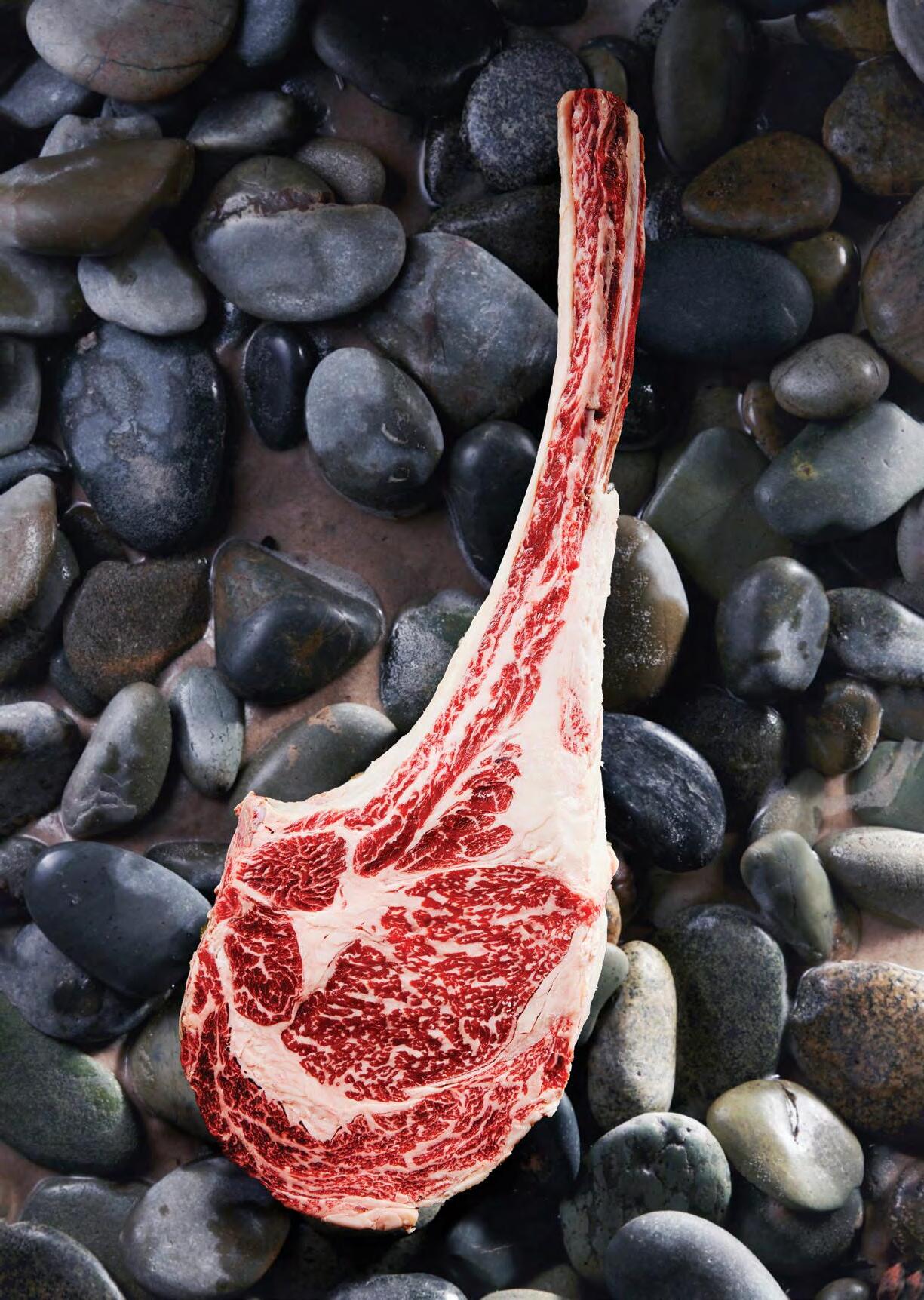
The Australian Wagyu Association will hold the Annual Wagyu Conference, events and tour from the 19th to the 24th of April 2023. This six-day event from April 19 – 24 will deliver keynote presentations, panels, Q&A sessions, debates and a tour into regional New South Wales.
WagyuEdge'23 is the leading international forum for the global Wagyu sector presenting a unique opportunity for Australian and international delegates to meet, find new partners, discuss challenges and share research, technologies and best practice.
An exciting mixture of industry events will take place in and around Darling Harbour Sydney.
Charlie Hart Managing Director, C.B Hart P/LC.B Hart P/L is an Australian agricultural company operating three livestock and property businesses, two agricultural supply outlets, M&M Stockyards and a contract farming operation in north west New South Wales under the banner of Hart Rural Agencies Barraba and Manilla.
As Managing Director of this family owned business, Charlie's role in the company is as a specialist livestock and property auctioneer. In addition, over the last 20 years, he has built a sizeable F1 breeding herd supplying substantial Wagyu to various feedlots fortnightly.
Hart Rural Agencies Barraba and Manilla have a 35-strong staff focused on helping their farming clients grow profitable and sustainable businesses whilst investing in the local communities.
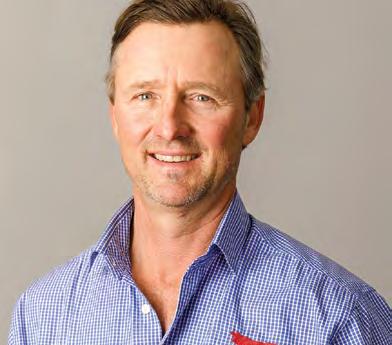
With a strong farming background, Lucy is the 5th generation to work at the family property, ‘Codenwarra’. Lucy’s involvement in Marathon Wagyu has grown as the operation has developed. The stud, owned by Lucy’s parents, Mike and Sue McCosker, plans to naturally and artificially join more than 1000 registered fullblood breeders in 2023. Lucy and her husband, Laine, manage operations at ‘Codenwarra’ in Emerald, Queensland, where the team is passionate about transparent and accurate data. Marathon Wagyu strives to collect, collate and share usable data to benefit their herd and the industry more broadly.transparent and accurate data. Marathon Wagyu strives to collect, collate and share usable data to benefit their herd, and the industry more broadly.
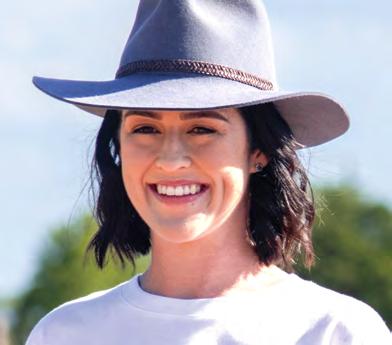

Anthony Fellows is CEO and a co-founder of Harmony Agriculture & Food Company, renowned for its integrated supply chain and worldclass Wagyu beef. Anthony has a wealth of experience in the meat and livestock sector. His career spans more than four decades across international trade and export, meat and livestock production and agribusiness management. Anthony is adept at managing operational costs, P&L performance and cashflow as well as overcoming challenges presented by dynamic geopolitical environments, the global pandemic, and business distress. He is respected for his grit and determination, and his commercial acumen. An advocate for agribusiness, Anthony is a leader on issues from mental health and company culture through to animal welfare and sustainable business practices.
Susan grew up on a cattle property located 70km south of Cloncurry. Educated by Correspondence School and Mt Isa School of the Air, she later attended boarding school in Brisbane. Attending the University of Queensland to study accounting, Susan had initially planned to complete her studies and return to the family farm; however, circumstances changed, seeing her work in different businesses as an accountant before becoming Chief of Staff for Natural Resources and Mines Minister Andrew CrippsQueensland Parliament. Elected to the Federal Parliament in May 2019, she is based in Townsville however travels extensively across the Queensland to ensure local communities are listened to and their needs are addresses. In June 2022, Susan was named Shadow Minister for Resources and Shadow Minister for Northern Australia.
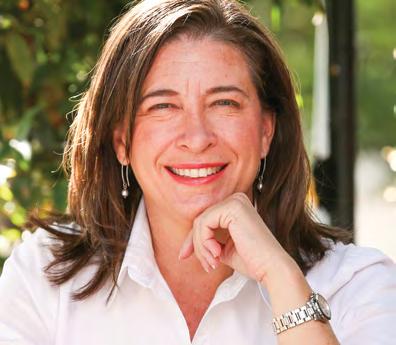
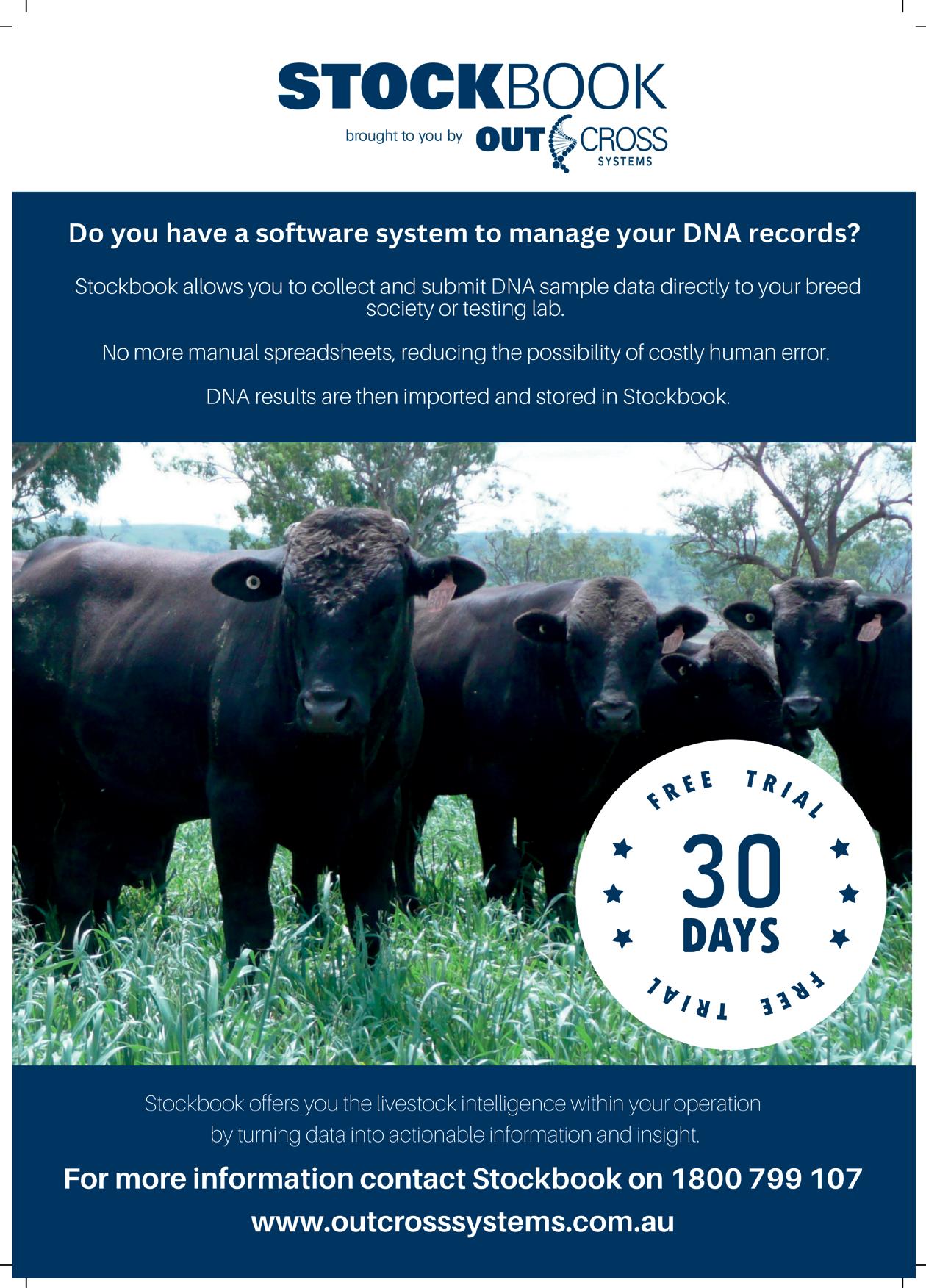
Wednesday 19 April
10 am General Registrations and DNA Testing Forms
You’ll get a full walk through of the AWA Registration and DNA testing forms and how to use them
10:30 am DNA
A chance for you to learn all about your DNA testing options, parentage analysis and DNA results
11 am Post DNA
Received DNA results? Learn all about what happens next including troubleshooting unexpected parentage results
11:30 am Performance Recording and BREEDPLAN
The next level – hear all about carcase data, contemporary groups and BREEDPLAN
Day one
Wednesday 19 April
Join us for the official opening of WagyuEdge'23 from 1 pm.
SESSION 1 TACKLING CHALLENGES HEAD ON
1:15 pm Why meat is good for you and the planet
Diana Rodgers – Dietitian, Author, Filmmaker and Executive Director at Global Food Justine Alliance
2 pm Challenges facing red meat production
Professor Paul Wood AO FTSE – Adjunct Professor, Monash University
2:45 pm Afternoon tea
SESSION 2 WAGYU SECTOR TECHNOLOGY DEVELOPMENT
3:15 pm New Wagyu Feeder Check
Dr Matt McDonagh – Australian Wagyu Association
3:30 pm New crossbred Wagyu predication tool
Dr Antonio Reverter (Toni) – CSIRO and Jason Lilly – Neogen
4:15 pm New tools for genetic diversity and data accuracy
Katie Dailey – Australian Wagyu Association
4:30 pm End sessions for day one
WAGYU BRANDED BEEF COMPETITION TASTING & AWARDS DINNER
Time 6 pm – 11 pm
Venue Doltone House Jones Bay Wharf
Dress Cocktail
Please note, this program is subject to change at any time. A final program will be provided to delegates upon registration.
Sample the best of the best Wagyu entered into the 2023 Wagyu Branded Beef Competition, and witness the crowning of this year's Wagyu Branded Beef Grand Champion over a three-course dinner with drinks and live entertainment from Mr Charlie Fittler.
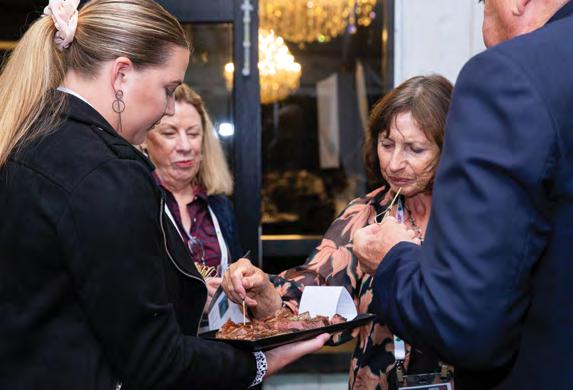
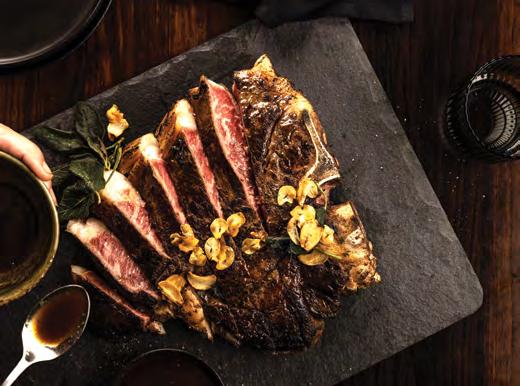
SESSION 3 WAGYU AND GLOBAL MARKET TRENDS
8:30 am Global trends in agriculture and luxury proteins
Liz O’Leary – Macquarie Asset Management
9:15 am Harmony agriculture strategy and direction
Anthony Fellows – Harmony Agriculture
9:45 am JBS Australia
Michael Finucan – GM, Marketing & Industry Relations
10:15 am Morning tea
SESSION 4 GLOBAL INNOVATION ON FARM
11 am Global success of HP Wagyu and L0010
Cameron Hewitt – HP Wagyu
11:45 am M6 Ranch
Kevin Moore – M6 Ranch
12:15 pm New generation Japanese farming
Tomotaka Ando – Cosmos Farms, Japan
12:45 pm Lunch
SESSION 5 FUTURE DRIVERS AND OPPORTUNITIES
2 pm Current trends in Wagyu in Japan
Professor Takafumi Gotoh – HOKKAIDO University
2:30 pm F1 supply chains – Information to decision making
Charlie Hart – C.B Hart P/L
3 pm What it takes to be the largest Wagyu supply chain in the UK
Tom Richardson – BM, Warrendale Wagyu
3:30pm Afternoon tea
SESSION 6 CHALLENGING THE RED MEAT POLICY ENVIRONMENT
4 pm Impacts of Government policy on animal agriculture
Senator Susan McDonald
4:40 pm Q&A - Senator Susan McDonald, Professor Paul Wood and Diana Rodgers
5 pm End sessions for day one
ELITE WAGYU SALE COCKTAIL DINNER
Time 6 pm – 11 pm
Venue Starship Sydney Luxury Cruise Boat
Dress Cocktail
The function includes dinner, drinks and entertainment featuring the AWA Elite Wagyu Sale.
Friday 21st April
SESSION 7 BENEFITS OF RED MEAT PRODUCTION
9:30 am Nutritional attributes of Red Meat
Dr Anneline Padayachee – The Food Scientist
10:15 am Insights into consumer perception of Wagyu
Dr Alex Ball – Director, Rural Analytics
11 am Morning tea
SESSION 8 FUTURE INDUSTRY DIRECTIONS
11:45 am From US army ranger to “Ranger Cattle”
Josh Eilers – Ranger Cattle, USA
12:25 pm The next generation
Lucy Thomson – Marathon Wagyu
1.05 pm Wagyu Fellowship: calf survival
Lachy Gilmore – Irongate Wagyu
1:25 pm Lunch
SESSION 9 GENE EDITING AND EMERGENCY DISEASE RESPONSE
2 pm Progress on gene editing and Government policy
Dr Carl Ramage – Managing Director, Rautaki
Solutions Pty Ltd
2:45 pm Emergency Disease Response - FMD and LSD
Speaker TBC
3:30 pm Conference close
WAGYU INDUSTRY DINNER
featuring Mayura Station and Rangers Valley
Time 5 pm – 11.30 pm
Venue Hyatt Regency Ballroom
Dress Black tie
The dinner includes a three-course dinner, drinks and entertainment plus the announcement of the 2023 Wagyu Hall of Fame Inductee and the 2023 Charity Auction in support of RFDS and the Wagyu Fellowship.
THREE-DAY WAGYU TOUR
Saturday 22 April - Monday 24 April
After the conference, buses will depart Sydney for an unforgettable regional NSW tour.
We will visit three Wagyu operations during the tour: Kuro Kin Wagyu , a leading producer of Fullblood Wagyu and F1 Wagyu. Bald Ridge Wagyu , specialising in fullblood black and red Wagyu and Gooree Park Mudgee , a producer of Wagyu, thoroughbreds and wine. The whole event promises to deliver inspirational learning, connection and celebration.
Allflex® Tissue Sampling Units provide a simple but effective means for DNA testing livestock. Collect a clean, uncontaminated sample in seconds with a single squeeze motion, TSU's are easy to use and yield excellent lab results.
TSU's can be paired with a matching NLIS and visual management tag, creating a simple link between the genetics of an animal and it's Identification. For

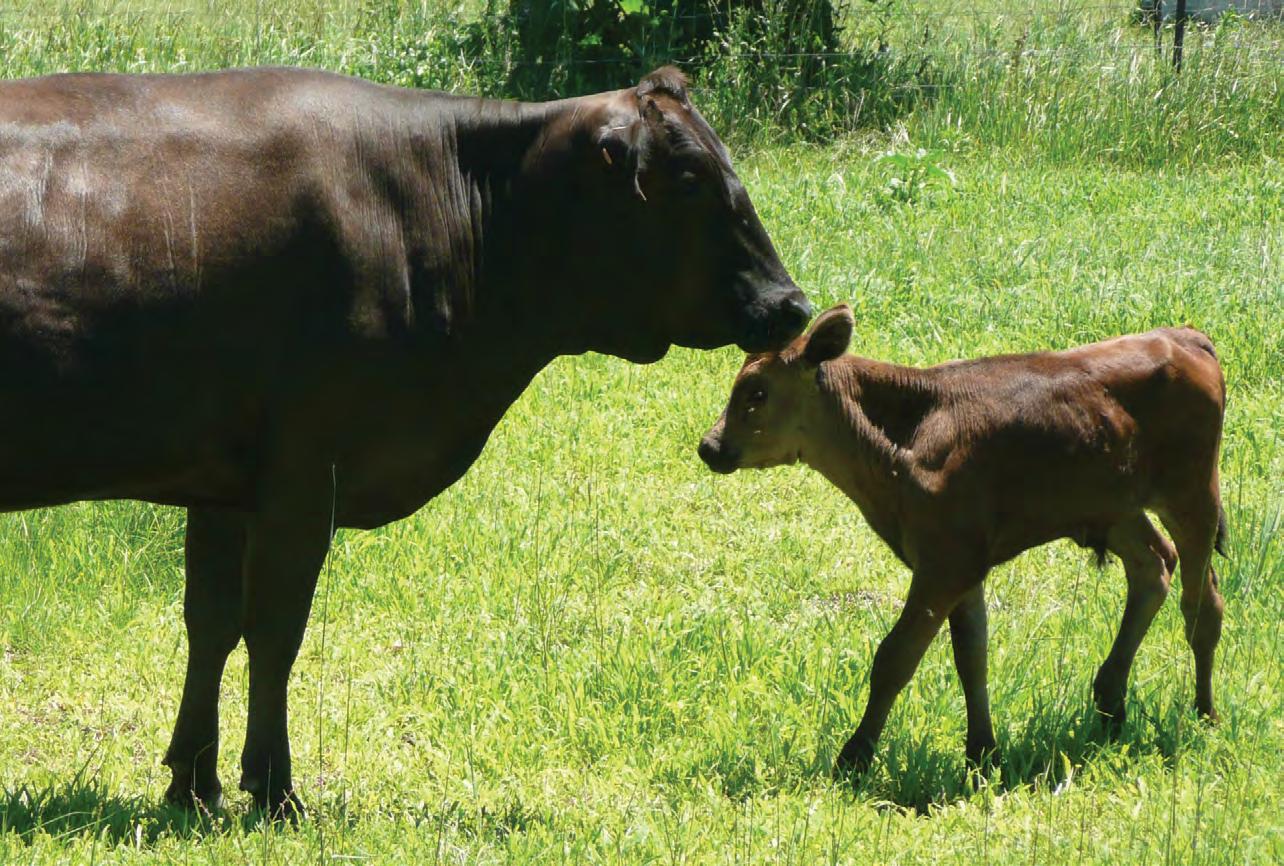
How EBVs could change with the addition of information
We often get questions from members about why EBVs for individual animals change, especially for proven sires with high accuracy.
This article will explain that EBVs can change as new data is added and we get a better statistical estimation of the animal’s genetics. This can occur even for proven sires that already have hundreds of progeny records, when members submit very large data files with potentially hundreds of additional records.
The accuracy value of an EBV gives an indication of the EBV’s reliability, and the likely extent of its possible change as more information becomes available. EBVs are based on the available information at the time of the BREEDPLAN analysis. The information available changes constantly as new data is added.


Purchasing quality bred Wagyu F1 and Fullblood feeder cattle by AWA registered Wagyu Fullblood bulls following Stanbroke genetic values.
Supply chain vendors receive full feedback information on livestock performance.

Cattle will be processed for our award-winning Diamantina brand.
DUANE WOODHAM
duanew@stanbroke.com | 0438 298 080
RICHARD SHERIFF
richards@stanbroke.com | 0428 557 258
RUSSELL HANDLEY
russellh@stanbroke.com | 0418 120 605
stanbroke.com
As more data becomes available on an animal (or its progeny, or relatives) then the accuracy of the animal’s EBVs for particular traits will increase. It is likely that the EBV will also change as data is added, because the EBVs are based on data, pedigree, and genomic analysis.
For example, a bull at two years of age might have EBVs based on his own performance and the performance of his siblings, parents, and other relatives. Even though these EBVs will be lower in accuracy, they are still the best available statistical information on the Bull’s genetic merit.
As the bull is used in breeding programs and his progeny are recorded, more information is available about his likely genetic merit. As a result, his EBVs
may change, and the accuracies will increase as the EBV estimation for the bull improve.
The EBV accuracy for a trait is influenced by the heritability of traits, the genetic association with other traits and the performance data recorded for those traits. For low heritability traits, more data is required to achieve a similar accuracy to that of highly heritable traits.
Table 1 below shows the confidence range at different levels of accuracy for each EBV published by the Australian Wagyu Association. As the trait accuracy for each EBV increases, the confidence range reduces significantly, meaning we expect less future change in the EBV.
1 Statistically, there is a 68% chance that an animal’s true breeding value will be within 1 standard deviation of its EBV, and a 96% chance that it will be within two standard deviations of its EBV.
The confidence range for each trait describes the maximum likely change to EBVs at different accuracy levels. Statistically, there is a 68% chance that an animal’s true breeding value will be within one standard deviation of its EBV.
For example, a 600-Day Weight EBV with an accuracy of 90% will have a confidence range of ± 10.3 kg. If an animal’s EBV is +70 then, with the addition of further information (e.g. progeny or sibling records), the EBV would be expected to be within the range of +59.7 kg to +80.3 kg (i.e. 70 ± 10.3 kg) 68% of the time (highlighted aqua in table 1 - page 19).

Accuracies are expressed as percentages. The higher the percentage, the greater the chance that the EBV is a close estimate of the animal’s true genetic merit, and a smaller likelihood that the EBV will change as more information becomes available.
Back to our original question regarding EBV changes in very high accuracy animals, normally proven sires. In Wagyu, it is not unusual to have a hundred carcase progeny records for a sire. These sires can have EBV accuracies of 95% or higher for carcase traits. It is also not unusual for such a sire to have tens or hundreds of additional carcase progeny records added over time.

For high accuracy animals, it is important to note that even the EBVs of proven sires can still change slightly with the addition of significant volumes of carcase progeny data. For example, a sire with a Marble Score EBV of +2.0 at 99% accuracy, can still be expected change by ± 0.2 MS units, with a likely EBV range of +1.8 to +2.2 MS units. (highlighted yellow in table 1 - page 19)

The change in EBV for a proven sire is driven by significant new carcase data records being submitted. In Wagyu, we have sires with more than 500 carcase progeny recorded and their carcase numbers are still increasing. So we can observe very large numbers of carcases being added to BREEDPLAN and these will have an impact on the EBV calculation, even for high accuracy animals.
For low accuracy animals, even though an EBV with a low accuracy may change in the future, it is still the best statistical estimate of an animal’s genetic merit for that trait. Generally, as more information becomes available, an EBV is just as likely to increase as it is to decrease, within the accuracy confidence range. The accuracy level of an EBV provides you with an estimate of the statistical confidence in the EBV and should be considered alongside the EBV value itself.





An indication of how reliable EBVs are
An EBVs accuracy is an indication of how reliable an EBV is and is therefore an important component to consider when making selection decisions for your breeding program. Put simply, the higher the accuracy, the better.

As a breeder, every time you make a decision to breed two animals, you are making a genetic selection decision, you are selecting the genetics you are passing onto the next generation. The higher an animal’s EBV accuracy is, the more reliable and the more predictable the response to genetic selection is.
Although EBV’s can be calculated based on an animal’s own performance data and genomics alone, the accuracy of EBVs increases when this information is used in conjunction with data from relatives – especially progeny performance data.
It is expected that as progeny data is submitted to BREEDPLAN, EBVs of individual sires will change (increase or decrease, see article on page 18) but the accuracy of the breeding values can only increase, making EBVs more reliable for producers to base their breeding decisions on.
The rate at which EBV accuracies increase varies, depending on a number of factors including the heritability of the trait (the proportion of the trait that is determined by genetics), the number of progeny (or relatives) with data submitted, and the contemporary group structure under which this data is collected.
Statistically, the most useful information to increase EBV accuracy comes from progeny in large contemporary (management) groups containing progeny from other sire/s which also have their data collected and submitted. This allows the genetic analysis to compare the relative performance of progeny of different sires to each other and establish the genetic differences due to the sires.
In cases where small amounts of data from only one or two progeny at a time is added, the change in EBV accuracy can be minimal and take a long time for cumulative data records and hence EBV accuracy to reach high levels. The graph (page 23) shows gradual changes in EBV accuracy over 3.5 years for two sires born between 2011 and 2015, each with a varying amount of data available from relatives.
It is expected that as progeny data is submitted to BREEDPLAN, EBVs of individual sires will change but the accuracy of the breeding values can only increase making EBVs more reliable for producers to base their breeding decisions on.
In Figure 1, we can compare the rate of increase in EBV accuracy for the Gestation Length and Birth Weight traits. In this example, we can see that the EBV accuracies for Sire 1 and Sire 2 for the Gestation Length trait are lower than the EBV accuracies for the Birth Weight trait at all three time points for each sire. This is due to the low heritability of Gestation Length (0.21) compared to Birth Weight (0.37). Genetic and progeny data for the Birth Weight trait adds significantly more information to the Birth Weight EBV accuracy.
With increasing amounts of progeny data included in Figure 1, we can see that the EBV accuracies for the two traits increases slowly but gradually over time. This can be compared to changes in EBV accuracy shown in Figure 2 below for sires 3 and 4, who were both born in 2019 and entered into Cohort 1 of the AWA Progeny Test Program as rising two year-olds.
BREEDPLAN
BREEDPLAN
BREEDPLAN
OCTOBER 2021 RUN
DECEMBER 2022 RUN
FEBRUARY 2023 RUN 1
2023 RUN 2
Figure 2 Changes in Birth Weight (BW) and Gestation Length (GL) EBV accuracies for two Progeny Test Program Sires entered in Cohort 1 with only PTP Progeny registered and analysed in the October 2021 BREEDPLAN (when they were accepted into the Program) to the February Run 2 2023 BREEDPLAN.
In Figure 2, we can see that Birth Weight and Gestation Length accuracies jumped significantly in just 16 months, with the registration and analysis of only PTP Progeny across six Contributor Herds.
This impressive increase in accuracy is made possible by having progeny analysed in large contemporary groups with progeny from multiple other sires and with strong genetic linkage across herds. Even for the Gestation Length EBV, which has low heritability relative to Birth Weight, because of the large contemporary group size, with multisire data, the change is EBV accuracy is considerable. The EBV accuracy change for Birth Weight is also very effective, with the current EBV accuracy for Sire 3 and 4 at 87% with 22 and 26 progeny recorded respectively.
>>>
As described in this Wagyu Quarterly Update (see Page 18), members who contribute data on progeny in their herds can improve the EBV estimate for their animals, as well as increase the EBV accuracy and hence the reliability of the EBVs for the animals they are using in their breeding programs.
Providing performance data to AWA will improve the estimate of the genetic merit of the breeding animals you are using and the estimate of the genetic merit of the progeny you choose to keep for future breeding generations. If you are collecting this data on your animals, obtaining additional value through sending your data to AWA to improve your EBVs is at no additional financial cost to you, the AWA pays all data entry fees and BREEDPLAN fees.
In addition to entering your own data, as shown in figure 2 (page 24), entering sires in the AWA Progeny Test Program rapidly improves EBVs for traits and EBV accuracies, enabling breeders to make more reliable breeding decisions within their own operation sooner.
80% of AWA Progeny Test Program Cohort 1 calves are now registered with important birth data submitted to

BREEDPLAN. It is expected that the accuracies for other traits will follow the same trend as data is submitted for weaning, growth, feedlot and eventually carcase and reproduction traits.
Not only will the AWA-PTP create high accuracy EBV’s for project sires and cows, but it is also designed to benefit all AWA members through maximising genetic linkage and genomic analysis power within BREEDPLAN. In time, this will further improve the breeding decisions and rate of genetic improvement in Wagyu across all participating herds and sire owners.
AWA members are urged to become involved in the program and nominate their sires to further enhance their Wagyu genetics.
Any Australian or international based AWA member can nominate sires for the AWA-PTP, giving an opportunity for all AWA members to have their next generation of sires proven through the program for current and new traits. There is also the opportunity for cow herds to be bench marked, with a minimum of 150 second-calf females to be submitted.

AWA's USA Wagyu tour (11 - 27 September 2023)
The Australian Wagyu Association will take a group of stakeholders on a 14-day tour across Canada and the USA, visiting 11 Wagyu operations and the 2023 American Wagyu Conference in San Antonio, TX. Unforgettable Wagyu operations we plan to visit include Wagyu Sekai, Vermont Wagyu, Bar R Cattle Co, Lone Mountain Cattle, Triangle B Ranch, M6 Cattle Co, Ranger Cattle and Landgraf Ranch.

Wagyu Sekai was established by Ken Kurosawatsu in 1992 in Puslinch, Ontario, Canada. Their first shipment of Fullblood Wagyu genetics to Canada out of Japan was in 1993.
Wagyu Sekai are now proud of their 100% Wagyu Beef branded as “Kurozawagyu” with pedigrees containing famous Wagyu sires such as Yasufuku, Monjiro, Shigeshigenami, Kikutani, Tanifuku Doi, Dai 7 Itozakura and Mitsufuku.
Vermont Wagyu
Springfield, Vermont
Vermont Wagyu was established in 2008 by Dr. Sheila Patinkin with 20 Fullblood Wagyu calves. It is located in the hills of Vermont and offers many beautiful sights. Sheila returned to Vermont 15 years ago after working as a trained paediatrician and is now one of the leading breeders of 100% DNA certified Fullblood Wagyu.

Vermont Wagyu prides themselves on restorative agricultural management, low-stress handling practices, and data-focused breeding of Wagyu.

Back in 1990, Jerry and Heidi Reeves began to transition their small commercial cattle herd into Wagyu and have been dedicated to advancing the breed ever since.
Located in the Palouse region of Eastern Washington, BR2 Wagyu Genetics LLC was established in 2004 by partnering Bar R Cattle Company and Blue Rock Cattle Company. They use progeny testing to evaluate their sires by leasing them to large commercial Angus herds which has allowed them to select elite sires with proven carcase genetics.

Lone Mountain Cattle, located in Golden, New Mexico was established in 1965 and is the leading Fullblood Black Wagyu Cattle Ranch in the United States. It is now owned and operated by Mary and Robert Estrin.


They began their transition into raising Fullblood Wagyu cattle in 2005 as Robert purchased the first two Fullblood Wagyu Bulls and nine Fullblood Wagyu cows and by 2006, the entire herd was Fullblood Wagyu.
They now aim to create the best possible genetics of American-Raised Fullblood Wagyu and are proving to do so.

Triangle B Ranch are located 15 miles North of Stigler, Eastern Oklahoma have been producing Fullblood and American Wagyu since 2002.
The ranch is a vertically integrated operation consisting of a cow/calf operation, bull stud, supplier of seed-stock and genetics, cattle feeding operation, and online eCommerce store.

They aim to produce the very best Fullblood Wagyu genetics and the highest quality beef, all while providing exceptional customer service.
Kevin and Jessica Moore are the sole owners and operators of M6 Cattle Co. LLC located in North Central Texas. They believe that Wagyu is the only breed that can deliver new levels of quality and health benefits to the beef industry and are using their years of experience to produce high quality Wagyu.


Kevin said “At M6, we have embraced the ultimate challenge in breeding Wagyu cattle. We are selecting for more carcass quality, more performance, more phenotypic eye-appeal while keeping heifer-safe calving ease.”

USA
Ranger Cattle was founded by Josh Eilers and is located East of Austin. Josh was a Sergeant and served as team leader in the U.S. Army’s elite First Ranger Battalion. After retiring from the military due to injury, Josh started to follow his passion for the beef industry and now aims to produce high-quality, pasture raised Fullblood Wagyu beef. His herd is free to graze over 300 acres and is free from harmful additives and hormones.
Santos Patronos Ranch is a Thomas family ranch located in Seguin, Texas, passionately producing top 1% Wagyu through their AI and IVF embryo transfer programs. Their animals are dual registered with Australia Wagyu Association and American Wagyu Association, they offer only the highest quality seedstock and genetics and provide finished beef direct to valued customers.
Landgraf Ranch is situated in Bastrop County, about 25 miles Southeast of Austin, Texas. There they are committed to producing the highest quality Fullblood Wagyu beef as all of their herd are born, raised and finished on farm.




Their herd is bred for genetic excellence, raised in a healthy and humane manner on 200 acres of Texas farmland. Landgraf Ranch is home to Fullblood Wagyu heifers and embryos with excellent bloodlines including: Mt. Fuji, Mazda, Michifuku, Shigeshigetani, Kenhanafuji, Kitaguni Jr., Fukutsuru 068, Kikuyasu, and Shigefu and stive to continually improve their herd genetics.
USA For the latest updates about the tour visit the AWA website




2013 to now - carbon improvement opportunities
Carbon farming has made a big entrance to the Australian agricultural industry in the past decade, with more than $2 billion tied up in projects across the country.

While it has been controversial, the carbon industry has developed a lot since its creation ten years ago, with ongoing reforms and dozens of new methods created to capture carbon. The industry’s peak body, the Carbon Market Institute, estimates $2.09 billion is tied up in more than 1100 projects across the country.
With emissions targets being set by agriculture and other industries, demand for carbon capture is likely to stay around for a while.
To understand the current AgCarbon environment, it is important to understand how the system has developed. The following provides an overview of the establishment of the AgCarbon market and regulatory system.
A change of government in 2013 meant a change of climate policy, with the Tony Abbott-led Coalition Government dumping the carbon tax and introducing the Emissions Reduction Fund (ERF).
The government also set up the “safeguard mechanism”, which sets a baseline for big emitters and requires them to offset if they not meet their target.
The $2.55 billion fund was set up with three key components;
1. A voluntary scheme where capturing carbon using an approve methodology could earn Australian Carbon Credit Units (ACCUs). ACCUs represent one tonne of CO2 equivalent.
2. A process for the government to purchase credits.
3. The ‘safeguard mechanism’ where companies exceeding a threshold of emissions were forced to offset with ACCUs.
With the government framework in place, carbon developers started buying and contracting large tracts of land in the mulga lands Western Queensland and New South Wales.
Projects were started across the country, but there was a major concentration in the mulga with developers using two main methodologies. ‘Avoided deforestation’ where landholders could choose not use a clearing permit to regenerate a forest and ‘human-induced regeneration’ where a change of management regenerated a forest – in this case it meant de-stocking.
The onset of carbon farming in the area was controversial, with many of the locals complaining about absentee landholders, properties being left in poor repair and people leaving the region. Others saw it as a reliable income during some uncertain years.

The COP21 summit in Paris saw 196 countries agree to work together to drastically limit human induced climate change. The goal was to limit global warming to well below 2, preferably to 1.5 degrees Celsius, compared to pre-industrial levels.
The Paris agreement endorsed carbon trading as an integral part of reducing warming and accounting mechanism was set up to ensure credits were not counted twice in carbon inventories.
While the areas of Western Qld and NSW had been operating for a number of years using vegetation-based carbon farming methods – agricultural systems started to become a part of carbon capture in 2015.
The Clean Energy Regulator released a soil carbon method, where a baseline measurement was taken, management changes occurred and a second measurement was taken to determine if carbon credits could be awarded.
Soil carbon is a big part of the current carbon farming push, but the relatively under-studied field has the science community divided. Some have doubts whether soil can hold carbon for the long-term and most say more data is needed for an answer to that question.
Either way, landholders have been warned to be careful when trading soil carbon credits because the carbon needs to stay in the ground to fulfil contracts.
A herd reduction methodology has also been created where producers can reduce herd emissions and claim credits for the efficiencies.
After four years of companies being able to claim ACCUs for making their herds more efficient, three major players in the northern pastoral industry have received credits for reducing methane emissions. According to the ERF register, Paraway Pastoral Company, Australian Agricultural Company and Consolidated Pastoral Company have all received credits using the herd reduction method.
Paraway was the first and had attempted to lead a project which aggregated smaller landholders together as one project, with the aim of reducing audit costs and allowing smaller producers to claim credits. But it was unable to receive the funding it was aiming for.
Scale has been highlighted as a big issue for the herd reduction method, with costs to measure emissions needing a large number of credits for it to become viable.
Former energy minister Angus Taylor announced changes to the ERF in 2022. He allowed companies to make an exit payment from government contracts and sell credits on the open market – which plummeted ACCU prices overnight.
Further pressure was put on the carbon market when Professor Andrew MacIntosh, who is the former chair of the government-appointed watchdog that oversees the Emissions Reduction Fund’s methods, claimed the majority of Australian credits were acquired using dodgy methods.
The complaints became an election issue, with the newlyelected Labor Government announcing a review of the methods highlighted by Professor MacIntosh. Former chiefscientist Professor Ian Chubb headed up the review.
After much anticipation, the Chubb-review was handed down in January 2023 and ultimately gave the carbon farming methods of concern, a clean bill of health.
The Federal Government supported the review in-principal and plans to pass it through parliament.
A new methodology allowing producers to run multiple projects in one spot, called the integrated farm methodology is expected to be ready later this year. The new integrated farm method will likely allow several projects to run in one area – for example producers could have soil carbon, vegetation and herd reduction projects all running as one.
The two strategies with most application in cattle are firstly, increasing soil carbon and secondly, reducing methane emissions.
A soil carbon project involves removing carbon from the atmosphere and storing it in soil primarily by increasing the amount of decomposing plant material and microbes in the soil. This is done by setting up specific project management activities and management actions that change agricultural soil conditions to improve crop and pasture growth.
The stored carbon is called ‘carbon stock’. Some project activities add extra carbon to the soil through increased growth, and therefore a greater volume of pasture and other plant-based matter, called ‘biomass’, in paddocks. Other activities reduce the rate at which carbon is removed from an area, and therefore the rate at which soil carbon is decreased—for example, projects that retain stubble. The resulting net reduction in greenhouse gas emissions is termed the ‘net abatement’.
Soils with higher organic matter are more productive, cycle more nutrients and hold more water, making them far more resilient in future climates. It is also therefore in our own interests to maximise soil organic matter in our pastures, which then has the co-benefit of a drawing more carbon dioxide out of the atmosphere. Fortunately, good pasture fertility, good species composition and good grazing management all contribute to maximising organic matter in our pasture systems.
As a sequestration activity, that is, an activity that stores carbon in vegetation or soil, a soil carbon project is subject to a ‘permanence obligation’. This means the modelled soil carbon must be maintained ‘permanently’ (currently either 25 or 100 years). If a fire or other disturbance occurs in the area during the project, or project activities stop, causing a decline in the amount of carbon stock, the land and its soil must be managed to allow the carbon stock to return to previously reported values.
Soil carbon is mainly correlated with rainfall in Australia, which means you may have plenty today, after our current la Nina, but if we go into a dry period the soil carbon you sold is no longer there.
It should be recognised that methane is the largest form of energy loss from livestock production systems, and it should be in our own productive interest to minimise this loss. In a typical livestock production system, methane from rumen fermentation makes up more than 75pc of all the emissions.
The recent COP26 meeting in Glasgow has now increased short-term ambition, with the new Global Methane Pledge aiming to reduce methane by 30 percent by 2030. While governments have been tardy in their responses, we have seen many multinational agri-business companies set targets for their supply chain starting in 2030.

Efficiency – there are simple things that livestock producers can do to improve the amount of methane per unit product, including reducing unproductive animal numbers, improving herd health, improved weaning rates and reproductive efficiency. All of these can reduce the methane produced by at least 10pc.
Better use of legumes in our pastures is also critical to reduce our reliance on imported protein or synthetic nitrogen fertilisers, but also recognising that some of these legumes (e.g. Vetch, Lotus, Sulla, Leucaena, Desmanthus) have a direct effect on reducing methane in the rumen by up to 15pc.
Oils and tannins – significant research has also been conducted on diet supplements that reduce methane, including oils (e.g. cold pressed canola meal), tannins (in some forage legumes), and some commercial products on the market that are based on essential oils (e.g. MOOTRAL and AGOLIN). These supplements can reduce methane by as much as 20pc. However, the challenge in livestock systems would be how to practically supplement grazing animals. This is an area of active research right now, but could include pelleting of the active ingredient with a high quality forage, water delivery or a slow release bolus technology.
Breeding – there is obviously also potential to breed animals that produce less methane (residual methane production). While these gains are initially slow, perhaps only achieving 1pc less methane per year, this could mean 10pc less methane in a decade as a permanent reduction in methane.
Methane oxidation – just when we think that all the options are inside the animal, the zero emissions livestock production (ZELP) company has produced I wearable device that hangs around the animal’s neck that can break down up to 50pc of the methane as the animal breathes out.
Next 1 to 5 years – strategies that are emerging from research in the next 1 to 5 years, would include a methane vaccine (achieving around 20pc less methane) and at least two methane inhibitor products (Asaparagopsis/ Seaweed and Bovaer®/3-NOP), both of which have shown to reduce methane by as much as 80pc in confinement studies. While the methane vaccine is a logical solution for more extensive grazing conditions, the use of methane inhibitors is still limited by practical delivery methods under grazing.
Early life programming – ultimately where the research should aim is a technology called early life programming, based on the concept that human gut microflora are a product of our upbringing, and the same appears to be possible in the rumen. A recent study showed that cows and their calves supplemented with a methane inhibitor during weaning, produced around 20pc less methane for the next 60 days without the supplement. This raises the prospect of intervening once in a generation with subsequent animals being low in methane production.
There is no doubt now that all sectors of the economy will need to demonstrate carbon neutrality by 2050. Clearly in the short term, the livestock industries will make heavy use of our own carbon offsets in trees and soil, but by definition this has a limited contribution to long term given there is a maximum limit of carbon that can be stored in soils and the area planted to trees.
While initially perceived as a threat to the livestock industries, the more proactive response by research has started delivering tangible solutions that mean that carbon neutral livestock production is quite possible within the next decade.
Methane reducing feed additives, namely seaweed asparagopsis and 3NOP or Bovaer, present many opportunities to the Wagyu industry. Feedlots are the easiest place to use the products, with several trials underway and research dollars being pumped into them.

There are still many questions to answer about palatability, safety and consumer acceptance. Cost is the other issue, which ranges between $0.4 and $2 per head at this stage. Companies behind the products have submissions in to make them eligible for carbon credits, which may offset the upfront cost.
Ultimately, having ERF methodologies for feed additives that recognise reduced methane emissions in cattle can most greatly benefit the Wagyu Sector, with Wagyu cattle spending significant time exposed to supplementary feeding or feedlotting throughout their lives.
While initially perceived as a threat to the livestock industries, the more proactive response by research has started delivering tangible solutions that mean that carbon neutral livestock production is quite possible within the next decade.

• NEW EXCITING HIGH CARCASE MERIT MAYURA L0010 SON, NOW AVAILABLE !
• TOP 1% MARBLE SCORE
• TOP 5% MARBLE FINENESS
• TOP 10% EMA AND RBY% EBV’S


ST Genetics Australia is proud to release Wyndford Diablo in Australia. This young sires boasts a pedigree of prominent elite carcase merit sires combining legendary Mayura sires Mayura L0010 & Mayura Itoshigenami Jnr with the highly sought after Sanjirou 3, who is a full brother to the original Sanjirou who was the highest-ranking carcass and marbling bull in the entire Wagyu breed in 2017.

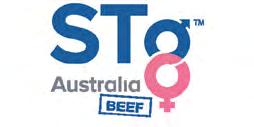

A new era of elite global genetics selling
2023 celebrates the 10th year of the Elite Wagyu Sale, with a new era of elite global genetics selling on a classy new venue with newly appointed Sale Day Facilitators, Ray White Rural Dalby.

70 lots of females, semen, bulls and embryos have now been catalogued, representing 49 vendors worldwide.
Ray White Rural Dalby, lead by dynamic couple David and Amy Felsch is a relatively new name to the Wagyu Sector, but not when it comes to multimillion dollar world-class sales, having run the largest registered stock horse sale in the world for several years now.
We took the opportunity to dive a little deeper into the Ray White Rural Dalby business with David and Amy, so that you know all about our selling agents ahead of the 2023 Elite Wagyu Sale.
David's first job as an agent was in Dalby with GDL under the leadership of Noel Grant and Peter Daniels. David says those early days working with Noel and Peter were very influential in his career and some of the fundamentals outlined by them are rudimentary to the way David runs his business today.
After the sale of Ray White Eastern Rural to Elders in early 2020, David and Amy were given the opportunity to open a new Ray White franchise in Dalby. David had previously worked for Eastern Rural and managed the livestock division. With no desire to work for a corporate run company and the chance to do something themselves – they said, “it was a no brainer”. With their young family’s future in mind, they took a leap and started the new business with a small but expert team and a following they never could have expected.

At present they have nine team members on board and are continuing to grow. During their Stud and Special Sales, the team multiplies with the assistance of those in the Ray White Rural Network who also hold a strong passion for the livestock and equine industry.

David and Amy say that running their own business allows them to make decisions based on what they feel is right for the clients and the team, instead of basing decisions on corporate direction or procedure. This means they can provide a personalised service with strong interpersonal relationships on their own terms.
and government forced market closures. The tough times certainly make for hard days as both an agent and friend to many of their clients but they believe it is important to endure alongside them and it ultimately makes them better at what they do.
The Ray White Dalby Livestock team conducts a wide variety of sales year round. These include commercial cattle sales via the weekly Dalby Cattle Sale, Paddock sales, Over The Hook, Feedlot and Auctions Plus Sales. They also conduct multiple Stud Sales and Special Sales, including the Dalby Stock Horse Sale (the largest registered stock horse sale in the world) for which they are the sole agent and organiser alongside the Darling Downs ASHS branch. This event attracts thousands of spectators and has now seen a gross of over $5 million for 269 horses offered at the 2022 sale.
David and Amy’s initial involvement with the breed came through one of their clients, Fucheng Woodlands, run by Dion and Sharon Porter, who produce high quality purebreds and F1 commercial Wagyu cattle. Their interest quickly grew on the back of Dion striving for better carcass quality in his cattle. Once they began doing some research and getting involved, they realised there was a lot of opportunity in the Wagyu breed compared to other commercial and stud breeds.
While there has been some incredible times and successes for David and Amy over the last 17+ years, there has also been some big lows they had to ride with their clients due to volatile markets, weather events
“We are also partial to good food, in particular steak. Once you have good wagyu it is hard to go back….just ask our 7 year old son!”
>>>
“ Relationships are built on trust and understanding, and the relationships we have with our team, our network and our clients are very important to our business model ” they said.Amy and David Felsch (pictured front row (L-R), fourth and fifth) with the extended Ray White Dalby team.
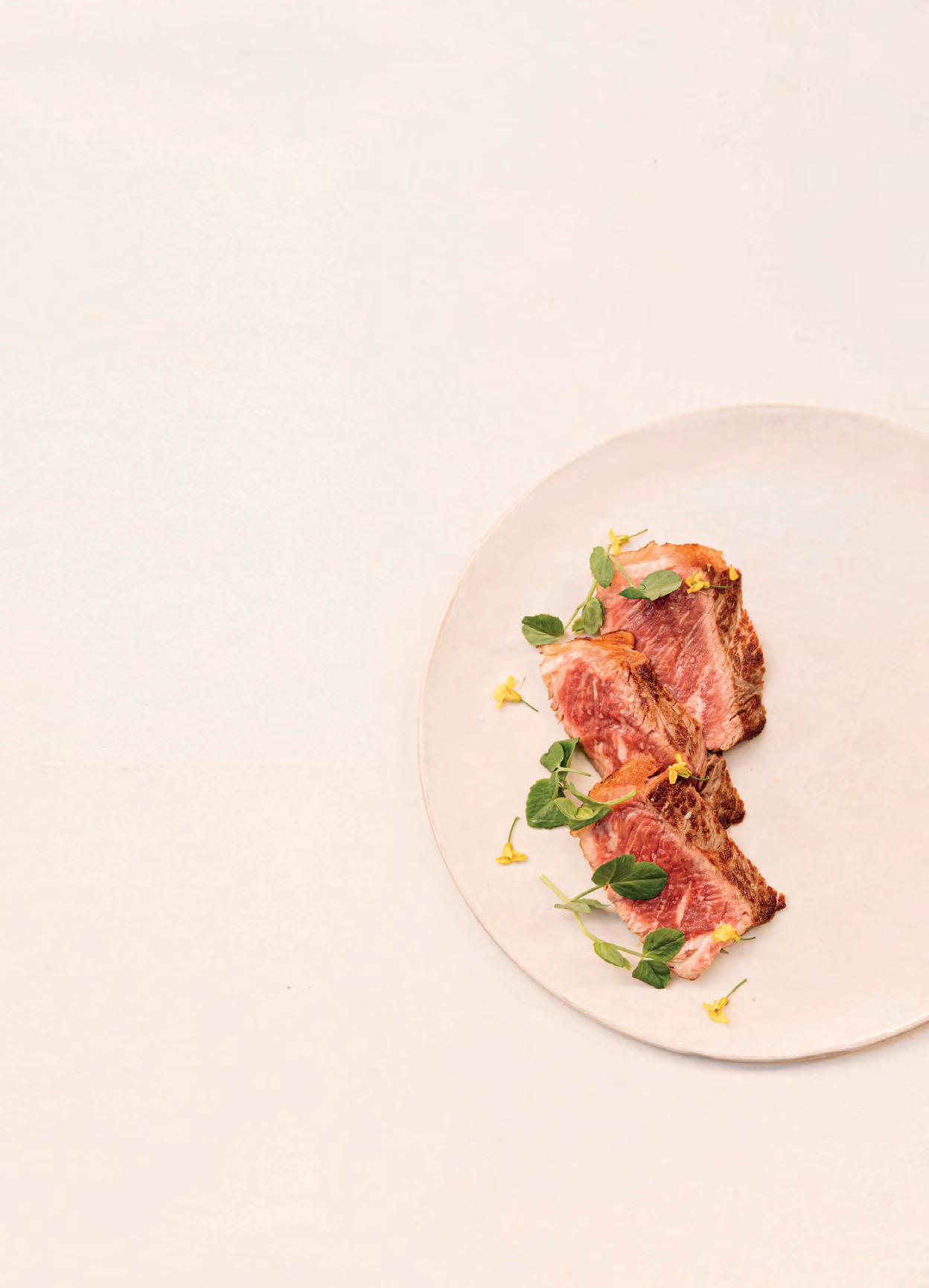
Be part of an established supply chain
Family owned & operated, over 65 years in industry
Consistent feedback and insights into cattle performance
Acclaimed global brand recognition and customer demand
BRANDON GALLAGHER LIVESTOCK PROCUREMENT OFFICER
P: 07 4692 2277
M: 0456 621 850
E: brandon@stockyardbeef.com.au

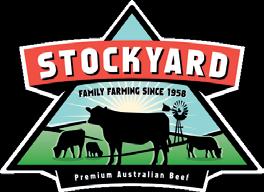



Ray

The Wagyu Sector moving forward through David and Amy’s eyes
As with any emerging product, David and Amy believe it is important the industry continues to develop and follow rigorous marketing guidelines and regulations to avoid subpar product flooding the market and misleading or disappointing consumers.
The Wagyu Industry should also continue to focus on carcase data and BREEDPLAN figures in order to continue improving our herds and ensuring we don’t lose sight of the premium product that is being produced.

The Elite Wagyu Sale


David and Amy have been attending the Elite Wagyu Sale (EWS) for several years and have always enjoyed the event. Seeing as their business specialises in the sale of livestock and they are experienced in stud sales, when the opportunity arose to be apart of the EWS, they were excited at the prospect of expanding their involvement within the Wagyu industry.

“ We can see some very high SRI lots along with lots backed by high achieving carcase data and access to superior breeding that is typically limited in the market. A premier offering has been presented and it is great to see the AWA are working hard to continue the exclusivity of the sale by ensuring all lots are of an ‘Elite’ status as the name suggests”
ADBFQ2140 impressive pedigree of Q2140 includes Shigeshigtani | Itoshigenami Jnr | Kitaguni Jnr
A stylish PTIC heifer carrying a pedigree loaded with breed leading names. S0018 sired by World K’s Shigeshietani and has a first class maternal line of Kitaterayasadoi | Mayura Itoshigenami Jnr | Mayura Zulu
PTIC to impressive sire WRPFQ0014 from quality genetic herds Strathdale | Robbins Island


20 APRIL 2023 - SYDNEY
WRPFQ0014 pedigree of Q0014 includes Moyhu D507 | Robbins Island female J1437
GENETIC ENQUIRIES WELCOME
Wright Pastoral is a family-owned Wagyu operation spread across four properties between Ebor in New England and Koreelah on the Northern Rivers of NSW. Our herd consists of 2,000 females producing high-quality F1/ F2 progeny and a growing fullblood herd built upon the best genetics within the breed.

Focused on the sustainable production of fullblood and crossbred Wagyu, we produce the highest quality marbling Wagyu beef, measuring performance data from birth to carcase we collect on every animal.
Wrightpastoral.com.au


1994 to 2022
The Australian Wagyu Association first formed in 1989 with four founding members implementing an independent registry for recording Wagyu progeny and their pedigrees and to commence development of Wagyu in Australia.
Reflecting on the past
In the ten years to 1999 , the AWA membership increased to 197 Full members. An excerpt from the AWA year 2000 annual report reads, “The majority of animals are held by just 50 members, these members have more than 20 Wagyu each….”
The first recorded progeny in the AWA Herdbook are sired by IMUFA0103 (Mazda, born 1974; 6 progeny registered in 1990, 111 progeny in total) and IMUFA0104 (Mt Fuji, born 1974; 13 progeny registered in 1990, 79 progeny in total). Fast forward to 2023 and the AWA now has over 1,000 Full members, with more than 250,000 Herdbook registered cattle. Much of the growth in registration numbers has occurred in the last 10 years, with growth accelerating such that in the last five years alone, AWA members have registered more than 112,500 calves (averaging 22,500 calves per year 2018 – 2022).


The growth in Wagyu registrations since 1994 are reflected in the following figure which shows the year-onyear cumulative progeny numbers for the 15 sires with the most progeny registered against them in the AWA Herdbook.
The breeding trends across the period 1994 to 2022 as shown in Figure 1 are broken into five phases of sire use to help explain changes in breeding over time.

Each sire is numbered by ranking the sires from 1 to 15 based on total number of registered progeny at 2022.
1 IMUFQTF148 9 IMUFR3258
2 WKSFMO164 10 SMOFF0126
3 IMUFQTF147 11 WKSFM0139
4 IMJFAJ2810 12 BDWFM0495
5 IMJFAJ2351 13 SMOFF0154
6 IMUFN2294 14 IMJFAJ2703
7 IMUFLTF151 15 WKSFS0100
8 ADBFA0139
In phase 1, starting 1994, we see high use of the foundation sires WKSFM0139 World K’s Haruki 2 (born 1992), WKSFM0164 World K’s Michifuku (born 1992) and IMUFN2294 TF Itohana 2 (born 1993) in the years up to 1999/2000.
Of the three original high use Foundation sires, Haruki 2 (red line) was used relatively moderately until 2011/12, after which his progeny number doubled again by 2015 before plateauing, with total progeny numbers at 2022 of 1,901. The progeny numbers for Itohana 2 ( black line) followed those of Haruki 2 until 2005, but then showed sustained increase through to 2020, with total progeny numbers of 3,379 at 2022.
Of the three original high use sires, only Michifuku ( grey line) has shown sustained high levels of use, particularly over the period 2005 to present. Michifuku’s direct progeny now total 6,485, making him the second highest use sire within the Wagyu Herdbook.
The next wave of foundation sire use occurred in phase 2 around 1999/2000, lead by IMJFAJ2810 Kitateruyasudoi (born 1993), who showed high use through to 2008/09. IMJFAJ2351 Hirashigetayasu (born 1989) also showed high use through this period, with consistent moderate use thereafter.
The AWA’s leading sire by total progeny number is IMUFQTF148 Itoshigenami (born 1995), who started to be used around 1999/2000 and who has been used highly and consistently used since then, with 7,298 total progeny recorded to 2022.
Other popular foundation sires that started to be used in Phase 2 include IMUFQTF147 Itoshigefuji (born 1995), IMUFLTF151 Itozurodoi (born 1991) and IMUFR3258 TF Terutani 40/1 (born 1996). Increasing use of these sires is a feature of Phase 3, along with increased use of Itoshigenami and Michifuku
1
3 15
2
Phase 3 of Figure 1 shows a general acceleration of breeding rates for many of the foundation sires, but a sharp acceleration in use of the three sires that will ultimately be the highest ranked AWA sires by total number of progeny recorded at 2022 Itoshigenami , Michifuku and Itoshigefuji ). In Phase 3, we also see an increase in the use of WKSFS0100 World K’s Yasufuku Jnr (born 1997).
Phase 4 of Figure 1 shows consistent use of all foundation sires from 2010/11 though to 2015/16, with the exception of Michifuku , whose progeny numbers increased markedly during the period compared to other sires. Of note during Phase 4 is the commencement of use of second-generation sires that will end up being within the top 15 sires by total progeny numbers at 2022.
Remarkably, it took 10 to 15 years for second generation sires to appear that would have a significant impact on future progeny numbers. These sires are direct descendants of two of the most extensively used sires during Phase 3 and will end up being in the top 15 of all sires for registered progeny numbers by 2022. These sires include:
ADBFA0139 Mayura Itoshigenami JNR (born 2005), SMOFF0126 Sumo Michifuku F126 (born 2010) and SMOFF0154 Sumo Michifuku F154 (born 2010).
Phase 5 of Figure 1 shows emergence of a third-generation sire BDWFM0495 Macquarie Prelude M0495 (born 2016), who in 5 years from 2018 – 2022 became the 12th ranked sire by total progeny numbers recorded with the AWA. Macquarie Prelude M0495 is the grandson of Kitateruyasudoi
Phase 5 of Figure 1 also shows the accelerated use of secondgeneration sires introduced in Phase 4, relative to the use of Foundation sires, with the exception of Itoshigenami , whose recorded progeny numbers accelerated significantly from 2015/16 through to 2022.
Trends in use of other Foundation Sires from 1994 to 2022

Figure 2 shows the progeny record number for the 15 Foundation sires ranked by total progeny registered that are not included in Figure 1 above. These sires are the next highest ranked Foundation sires, ranked from 17th to 82nd by total registered progeny numbers with the AWA. Progeny numbers for these sires are considerably less than sires in Figure 1, ranging from 1,410 ( IMUFP0036 -TF Itomitchi ½ ), down to 336 ( IMJFF0005 – Shigefuku J1822 )
The general breeding Phases from Figure 1 are shown on Figure 2 for comparison. As for Figure 1, there is commencement of breeding activity using several Foundation sires in the early part of Phase 1 starting 1994. These sires include IMUFP0036 ( TF Itomitchi 1/2 ), IMUFJTF40 ( Terutani TF40), IMUFM2100 ( Kikuyasu 400 – born 1992), IMUFN2127 ( Kikuhana – born 1993) and IMUFN2461 ( Kenahanafuji - born 1993). It is of interest to note that of these sires, only TF Itomitchi 1/2 saw high use in breeding through later Phases.
Phase 2, starting around 1999/2000 saw the introduction of the remainder of Foundation sires, with IMUTF150 ( Kikuterushige) showing very high use through Phase 2 before plateauing in Phase 3. Kikuterushige progeny numbers started to increase from 1998, but are most prominent through the 1999 to 2005/06 period.
Phase 3 saw rapid growth in several Phase 2 sires including IMJFMJ068 ( Fukutsuru J068 ), IMUFQ2599 ( TF Yukiharunami 4) and TWAFR0003 ( TWA Ichiryuno).
The use of the Foundation sires represented in Figure 2 plateaued through Phase 4 and 5, with the exception of TWAFR0007 ( TWA Shikikan), IMUFP0036 ( TF Itomitchi ½ ) and

Figure 3 shows the progeny record number for 20 nonfoundation sires (second and third generation) sires whose total progeny numbers rank them in the top 50 Wagyu sires by number of progeny registered with the AWA.
Of particular note are the sires WSRFQ0062 (Overflow Kaneyama - sired by World K’s Haruki 2) and WSRFS0060 (Overflow Katsumi - sired by World K’s Michifuku). These are the first two second generation sires against which progeny records are noted with the AWA.
Figure 3 shows the majority of second and third generation sires within the top 50 ranked progeny number sires start having progeny recorded against them from 2005/06 onwards. Individual sire use is not commented on further in this article, as the appearance of these sires and the recent breeding trends in using these sires is the main point made. Some sires only have progeny recorded in the last 3 years (2020 – 2022), but already have close to 1,000 progeny recorded during that time.
As shown in Figures 1 and 2, the predominant influence on the total AWA registry to date is the sustained breeding from Foundation sires up until to 2015/2016 period. Approximately 50% of the top-ranking sires based on numbers of registered progeny are Foundation sires. This means that there have been high levels of introgression of Foundation genetics into the registered Wagyu herd and that we have good representation of the majority of Foundation genetics in our Herdbook.
Of note in Figure 1 and 3 is that starting from 2005/2006, but particularly since 2015/2016, we are seeking a marked increase in use of second and third generation sires. To make genetic progress, a fundamental requirement is that new sires are identified that have higher genetic merit for traits compared to Foundation sires. The rapid increase in new sires over the last 10 years from a number of herds using a range of genetic backgrounds, provides breeders with opportunities to increase genetic gain for the future. This gain can be achieved on top of a well-established base of broadly infused Foundation genetics.
In upcoming Wagyu Quarterly Update magazines, we will focus more on genetic selection trends for different traits and how these have been impacted by the use of Foundation and new generation sires.
A natural feed stable bacteria enhancing feed digestibility and performance.
Australian company Nutriment Health and Danish bacteria company Chr Hansen have led the way in research to develop Bovacillus™ a natural feed bacterium for inclusion in pasture and feedlot supplements for beef cattle.
Bovacillus™ is a combination of natural bacillus bacteria that control some pathogenic bacteria, are heat and moisture stable in pellets, blocks, mineral licks, liquid supplements and beneficial to the soil microbiome.
From a sustainability and environmental perspective, the bacillus spores germinate in the rumen, reproduce exponentially, producing enzymes that enhance digestibility of feeds in the rumen and small intestine, allowing greater nutrient absorption and performance. This allows greater feed utilisation and efficiency, while benefitting the soil microbiome as the spores pass onto the pasture in manure.
Wagyu cattle numbers have grown significantly in Australian feedlots with market reports suggesting Wagyu cattle are utilising >30% of Australian feedlot capacity. Bovacillus™ a natural feed stable probiotic is now widely used in Wagyu feeding programs, reducing, and replacing the need to use antibiotic feed additives.

University Of Queensland studied the effect of Bovacillus™ on nutrient digestibility of forage and high starch concentrates. This work has been recognised internationally with the publication of the results in the American Society of Animal Science. The report states Bovacillus™ improved the mean in vitro Dry Matter and Neutral Detergent Fibre digestibility on 9 out of 10 different grass/forage samples from 17.9% to 34.7%. Bovacillus™ had a significant effect on starch digestibility on all five grain types highlighting the potential of Bovacillus™ probiotic to improve digestibility and utilization in beef and dairy cattle.
Australian and international feedlot trials fed Bovacillus™ on high grain diets, non HGP, with and without monensin have resulted in performance improvement in daily gain and
feed efficiency. Dairy research comparing Bovacillus™ to non-treated cows in production, showed an improvement of 4.7% in milk production (2 litres/day) and 6.25% in fat yield. This work supports Australian beef producer feedback on improved calf weaning weights and health. At a large North Queensland cattle station, weaned heifers were split into two groups and fed mineral lick over 70 days. The Bovacillus™ treated heifers gained 11 kg more than the control cattle.
( Published in Animal Production Science 2022 ).
Australian research is highly regarded in the USA, Europe, Brazil, and Argentina with Bovacillus™ now being launched in all these markets from initial development feeding Wagyu beef cattle in Australia. Bovacillus™ is being quickly adopted in Australian beef feeding systems including feedlots, production feeding on farm, mineral supplements and blocks used in branded antibiotic free grass-fed programs.

Wagyu BREEDPLAN EBV's allow producers to judge an animal's genetic merit for a range of traits that directly influence profitability. EBV's are extremely useful when comparing and assessing the genetic potential of animals and trait performance data is essential for generating these EBV's using BREEDPLAN.
While the BREEDPLAN model is very complex, the basics by which it works is to directly compare the performance of an animal with the performance of other “similar” animals within the same contemporary group. Put simply a contemporary group can be described as animals of the same sex, of the same birth type, from the same herd, of a similar age and run under the same conditions i.e. animals that have had the same opportunity to perform.
In the Wagyu Quarterly Update 82, page 51 to 54. �� issuu.com /australianwagyuassociation
In this article we discussed recording performance data and what data you should submit at what stage of an animal’s life cycle. To follow this, this brief article will discuss making sure the data you submit is usable by the system and some commons things we see resulting in data not being able to be used effectively. Submitting useful data is extremely important to ensure members gain maximum benefit from their data.
It is important for members to manage their herds such that contemporary group size is maximised and to create genetic linkage within their herd and other Wagyu herds.
Large management groups allow for accurate EBV's as the outside effects are minimized such as difference in management or environment - allowing more of the variation between individuals to be accounted for by an animal's genetics. For example, BREEDPLAN can only compare the weight and genetic merit of steers within ONE management group if they were weighed on the same day under the same conditions (managed as one group from birth).

The effect of contemporary group size on the effectiveness of performance is illustrated in figure 1. As illustrated in the graph, the greatest increase in effectiveness is observed going from one animal to two animals in a contemporary group. That is, a record in a single animal contemporary group is not effective, because it can’t be compared to anything.
A performance record in a contemporary group of two is 50% effective, so starting to contribute useful data. Once five to ten animals are represented in a contemporary group, the added increase in effectiveness diminishes quite rapidly with increasing group size. However, the general aim for all herds should be to maximise contemporary group size if they want to get the most value out of their data.
Calves will be analysed in the same contemporary group if they:
Were bred in the same herd, Were born in the same calving year, Are of the same sex, Are of the same birth number (i.e. single calves not compared with twins), Are of the same birth status (i.e. natural/AI calves are not compared with ET calves), Have been measured on the same day (and have the same measurement history), Are of similar age (typically age slicing is 45 days for birth and 200-day weight and 60 days for 400 and 600-day weight and carcase records), and, Have been run under the same conditions (i.e. animals are in the same breeder defined management group).
1. Use more then one sire (BREEDPLAN requires at least two sires to be represented in the group for the progeny to contribute to the calculation of the EBVs sire)
2. Use a sire used widely in other herds (it is of benefit for you to use sires which are used by other herds to create linkage within a herd, across herds and across years).
Male calves getting registered as steers
All male calves should be submitted to BREEDPLAN as males at the beginning of their life. If submitted as a steer, the birthdate is automatically assumed as its castration date. The castration date recorded on the animal influences how the BREEDPLAN analysis assigns individuals to contemporary groups.
Recipient details are not provided for ET calves
Herds that use embryo transfer need to identify at least the breed and age of the recipient dams of ET calves. If the breed of recipient dams is not supplied ET calves are split into single animal analysis groups and therefore their own performance cannot be used to maximise the analysis of ET calves by BREEDPLAN, it is preferable if the recipient dams used are all the same breed.
Accurate birth dates are essential within BREEDPLAN as they are used to calculate the age of an animal to provide the foundation for 200, 400, and 600 day weights and allows for the comparison of animals of similar ages within management groups. Therefore, birthdate is important to allow BREEDPLAN to accurately adjust the weight of the animals in the group to allow them to be compared. For example, if you weigh an animal at 265 days old rather than 200, the weight can be adjusted back to a 200-day equivalent.

Once castrated, members can submit a castration date to the AWA and the register will be updated. Only calves of the same sex at measurement will be directly compared in the same contemporary group i.e. bulls with bulls, heifers with heifers, steers with steers. It is important to note that males that are weighed initially as bulls and then castrated will have their first weight compared with all the other males and their second weight only with the steers.
Wagyu supply chains can contribute large amounts of data from carcase grading at slaughter back to breeders. For this data to be used to help improve your sires EBVs, the steers need to be DNA tested, parent verified (at least to the sire) and registered in the AWA slaughter register. It cost’s nothing to register steers in the AWA slaughter register and the data can then be used to improve the EBVs of your sires.
“ Performance data is extremely important to breeders and it is vital that breeders understand the factors that influence the formation of contemporary groups to ensure they maximize the effectiveness of their data for future use ” .



